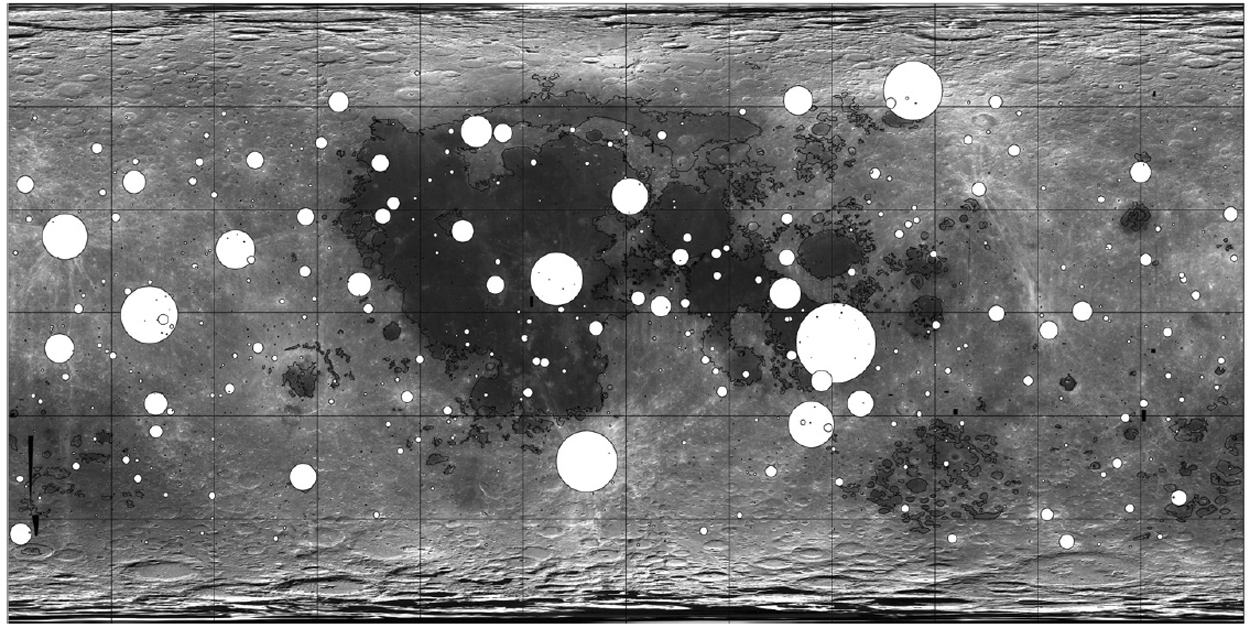Difference between revisions of "January 6, 2012"
| Line 23: | Line 23: | ||
I thank Stephanie for a copy of her paper and the rayed craters database.<br /> | I thank Stephanie for a copy of her paper and the rayed craters database.<br /> | ||
<br /> | <br /> | ||
| + | <p><b>Yesterday's LPOD:</b> [[January 5, 2012|Limb Magic]] </p> | ||
| + | <p><b>Tomorrow's LPOD:</b> [[January 7, 2012|A Long Line in a Clutter of Magnificence]] </p> | ||
<hr /> | <hr /> | ||
| − | |||
| − | |||
| − | |||
| − | |||
| − | |||
| − | |||
| − | |||
| − | |||
| − | |||
| − | |||
| − | |||
| − | |||
Revision as of 11:58, 7 February 2015
Where They Are

image from Stephanie Werner & Sergei Medvedev (2010)
I like maps that show the distribution of different types of features on the Moon. This is a new one that plots ray craters,
here shown 5 times their actual diameters for this scale map. There are 1707 rays craters with diameters as small as 500
m between 70° N and S - it is too difficult to detect rays closer to the poles. Most of the circles representing rayed craters
are too small to see because only 273 have diameters of 5 km or larger. This is another demonstration of the power law
distribution of crater diameters. We observe and get excited by the big craters, but they are a small minority of all craters.
This study showed that rayed craters as a population are about 750 m.y. old, and that date should be recognized as the
age of the boundary between young Copernican craters and older Eratosthenian ones. Currently, the boundary is said to be
at 1.1 billion years, but that includes rays due to composition - bright anorthosites on dark maria - that age more slowly than
rays whose brightness is due to the freshly pulverized rocks. Another discovery from this extensive mapping is that craters
are concentrated in the direction of movement of the Moon in its orbit, but not as coherently as previously believed. This
work has produced a new list of rayed crater locations and diameters which can be the basis for a further study to add ray
lengths and to devise a ray classification.
Chuck Wood
Technical Details
I thank Stephanie for a copy of her paper and the rayed craters database.
Yesterday's LPOD: Limb Magic
Tomorrow's LPOD: A Long Line in a Clutter of Magnificence



